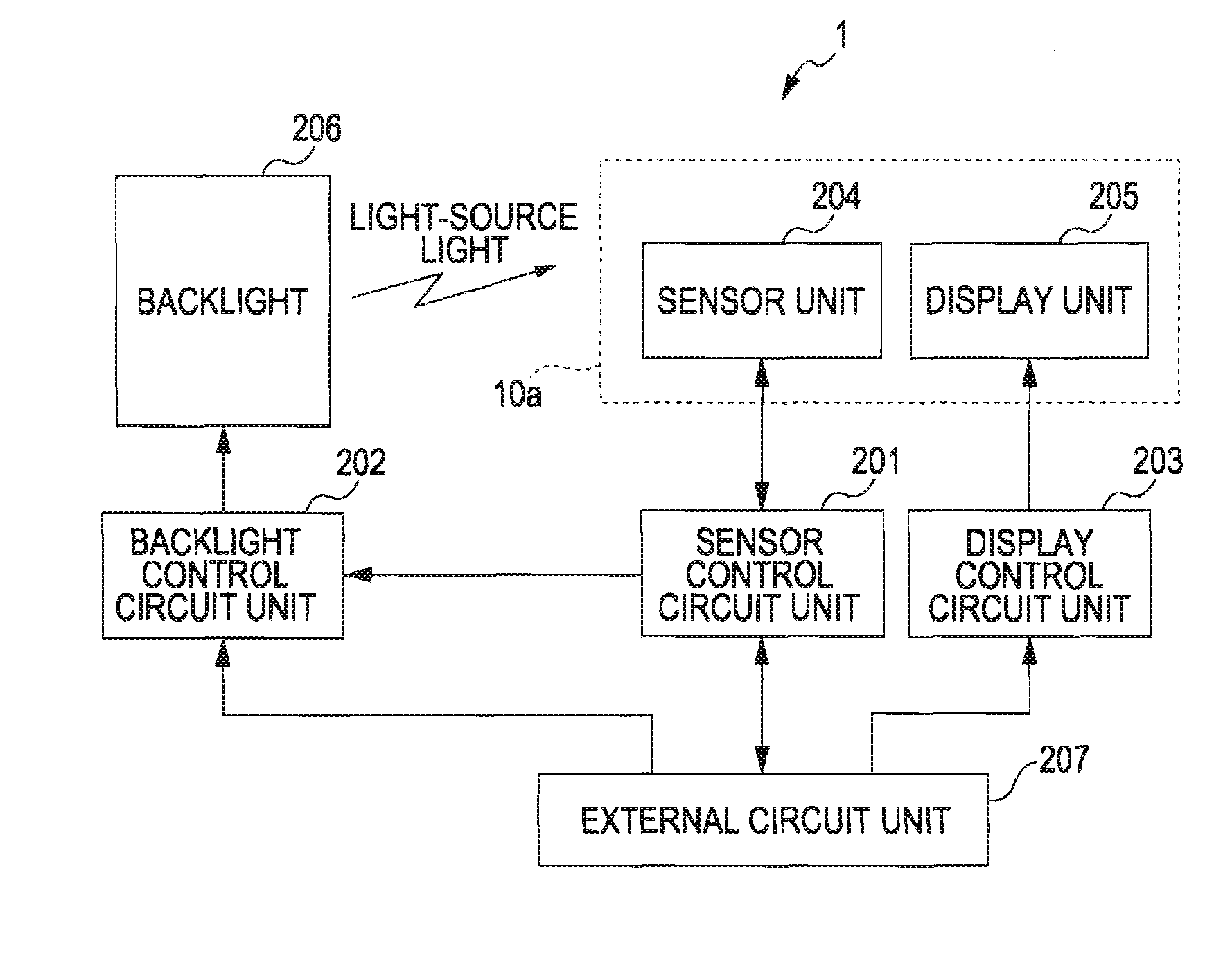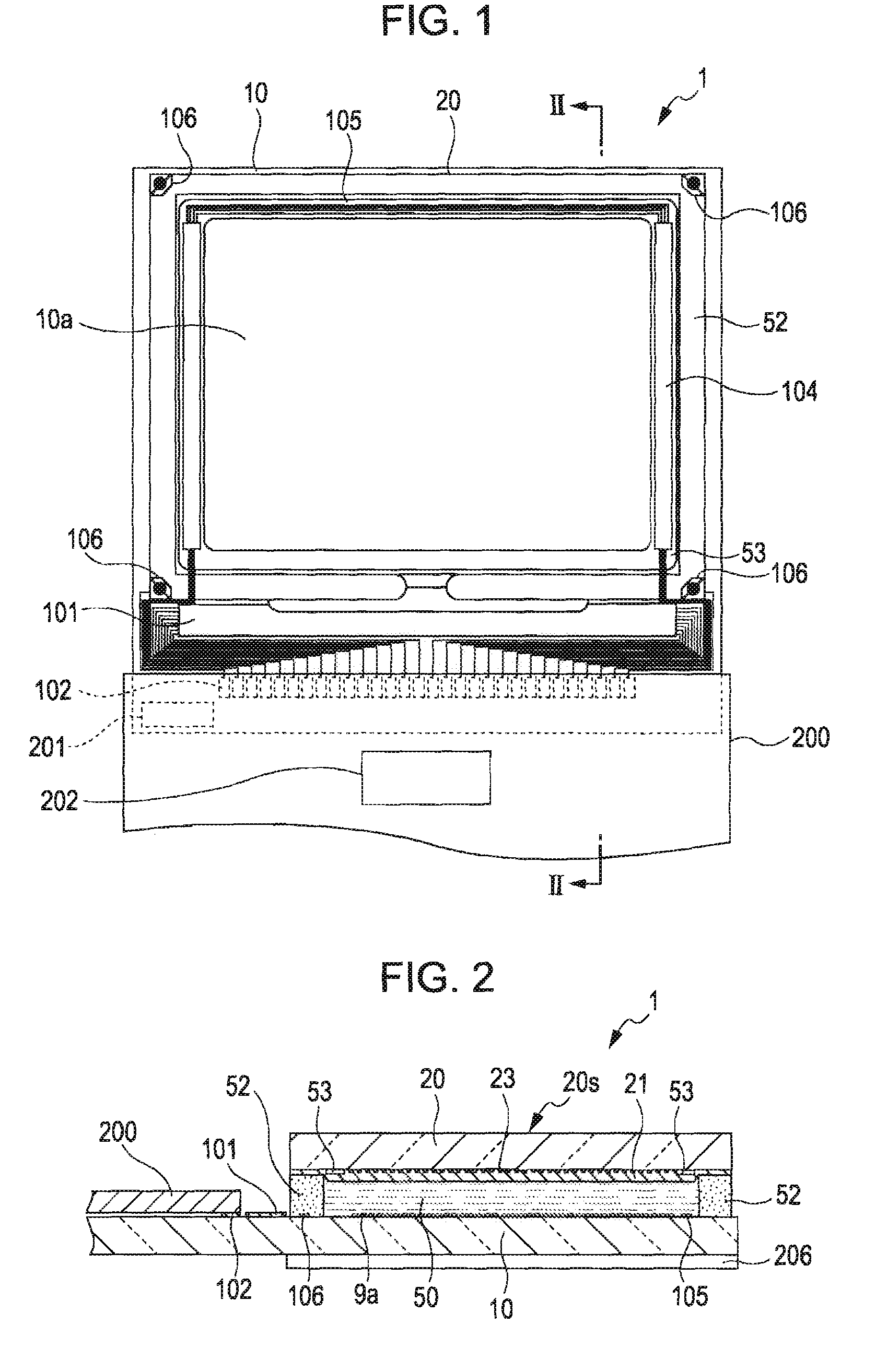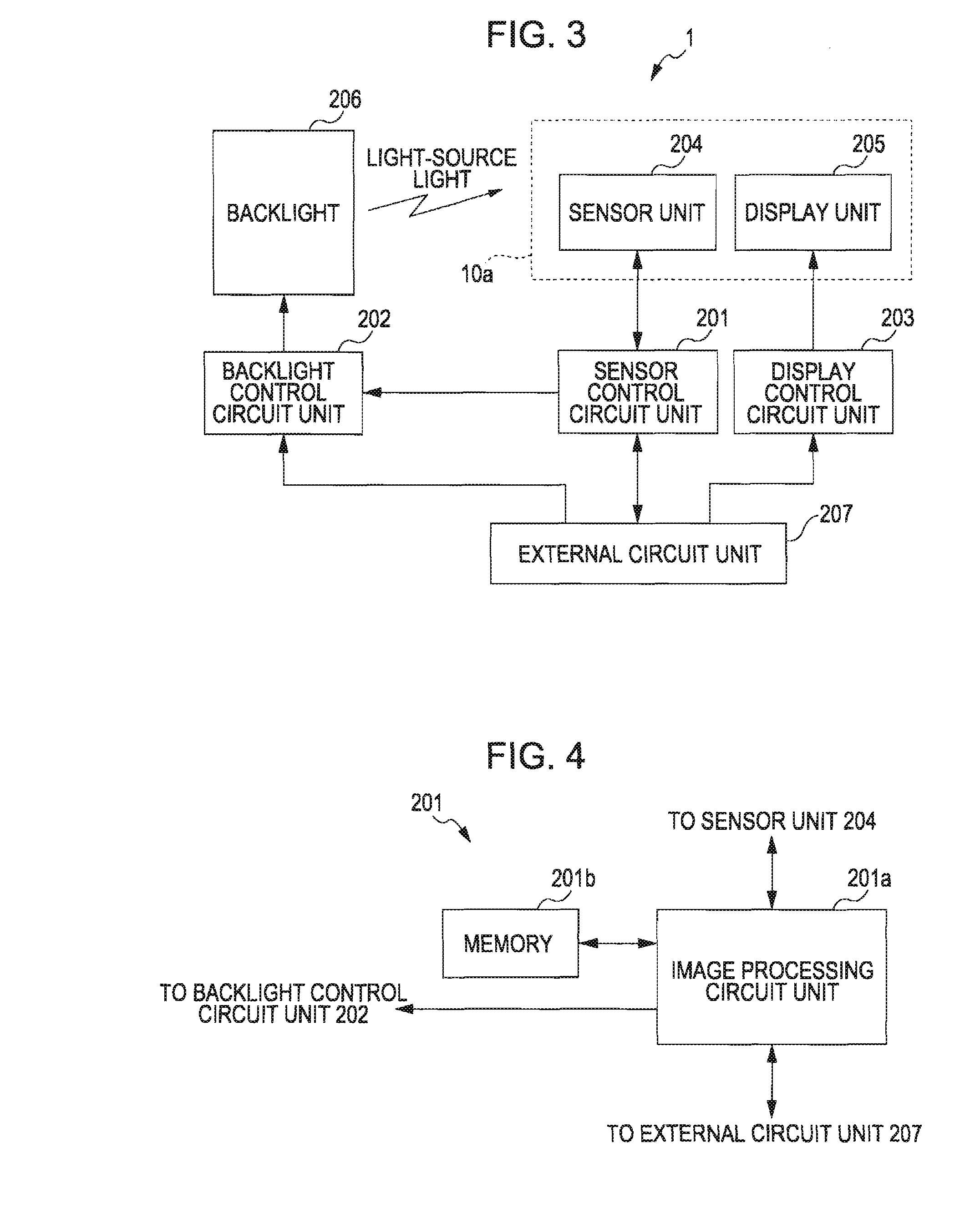Display device and electronic apparatus
a technology of electronic equipment and display device, which is applied in the field of display device and electronic equipment, can solve the problems of difficult to distinguish the detection light that is reflected by the pointing object from external light, become practically impossible, and difficult to detect the position of a finger with a high precision, and achieve the effect of high precision
- Summary
- Abstract
- Description
- Claims
- Application Information
AI Technical Summary
Benefits of technology
Problems solved by technology
Method used
Image
Examples
Embodiment Construction
[0053]With reference to accompanying drawings, exemplary embodiments of a display device and an electronic apparatus according to some aspects of the invention are explained below.
1-1: General Configuration of Display Device
[0054]First of all, with reference to FIGS. 1 and 2, an explanation is given below of the general configuration of a liquid crystal device 1, which is an exemplary embodiment of a “display device” according to the invention. FIG. 1 is a plan view of the liquid crystal device 1 that schematically illustrates an example of the configuration of a TFT array substrate and various components formed or deposited thereon, which are viewed in combination from a certain point at the counter-substrate side. FIG. 2 is a cross sectional view taken along the line II-II of FIG. 1. The liquid crystal device 1 according to the present embodiment of the invention is provided with a built-in driving circuit. The liquid crystal device 1 according to the present embo...
PUM
 Login to View More
Login to View More Abstract
Description
Claims
Application Information
 Login to View More
Login to View More - R&D
- Intellectual Property
- Life Sciences
- Materials
- Tech Scout
- Unparalleled Data Quality
- Higher Quality Content
- 60% Fewer Hallucinations
Browse by: Latest US Patents, China's latest patents, Technical Efficacy Thesaurus, Application Domain, Technology Topic, Popular Technical Reports.
© 2025 PatSnap. All rights reserved.Legal|Privacy policy|Modern Slavery Act Transparency Statement|Sitemap|About US| Contact US: help@patsnap.com



